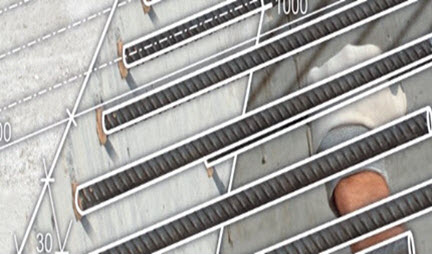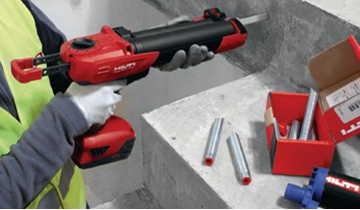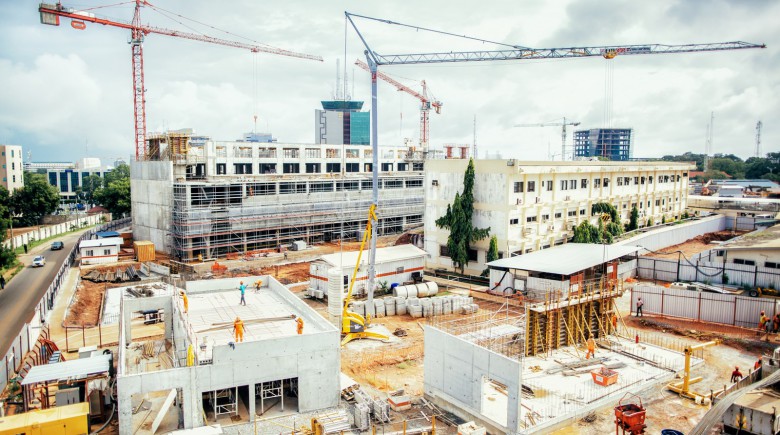REBAR DESIGN CENTRE
Trust Hilti products and solutions to solve the toughest post-installed rebar challenges
Post-installed rebar can be used to build most connections on site – for instance, walls, slabs, beams, foundations or supporting columns. Everything we design is based on Eurocode 2 and TR023. But at Hilti we’ve gone even further. We’ve created a range of unique design concepts to make building with post-installed rebar and concrete more economical. And all of this is based on one simple principle – that our cutting-edge products are so innovative that they can fix post-installed rebar in new, improved and exciting ways.
EXTEND EXISTING STRUCTURES
This is the
most common use of post-installed rebars, as for example for:
§
Wall extensions
§
Column
extensions
§
Beam
extensions
§
Slab
extensions
§
Balcony
extensions
CONNECT NEW COMPONENTS TO
EXISTING STRUCTURES
These are
simply supported or rigid connections, used for:
§
Beam to
wall connections
§
Corbel to
wall connections
§
Connecting
staircases to existing walls
§
Wall to
wall connections
STRENGTHEN EXISTING CONCRETE
STRUCTURES
We’ve also
developed unique solutions for shear friction for bridge deck overlays and
punching reinforcement.
§
Concrete
overlay
§
Ceiling
reinforcement
§
Column
foundation
§ Bridge deck strengthening
hilti rebar design concepts
We’ve designed several solutions for post-installation rebar builds, which include concepts to overcome the limitations of structural concrete codes.
| Shorter anchorage length | Rigid connections with straight bars | Shear reinforcement | Concrete overlay |
This is the most common class of applications for post-installed rebars and includes the connection of new components to an existing structure. According to structural concrete building codes, the bond strength of cast-in bars is limited, even where depth of concrete cover is considerable. And so, in some areas, such as walls where anchorage depth is often limited, welded transverse reinforcement or hooks are used to compensate for the reduction in available anchorage length. Our research, along with our partners’ research, has shown that the bond strength of bars anchored with Hilti adhesive mortars is higher than that of cast-in place bars, provided there is adequate concrete cover. The Hilti HIT Rebar Design Method takes advantages of this increased bond strength in order to achieve anchorage length reductions of up to 70%, when adequate concrete cover is applied, compared to the figures given in building codes. . . | Hooked or bent rebar is needed to resist rigid connections, for instance between slabs and walls, beams and slabs, beams and walls, columns and foundations. But we’ve found a solution. . . . . . . . . . | Hilti concrete overlay and shear reinforcement design concept Shear reinforcement is used mainly to refurbish and strengthen old structures, including bridges. At Hilti we’ve come up with a new and easier way to apply punching shear reinforcement, by putting in anchors from only the lower side of a slab. You can do this using Hilti tension anchors HZA-P, which are bonded into drill holes inclined towards the column, using Hilti mortars. This is much easier than the traditional method of post-installed punching shear reinforcement, where both the lower and the upper sides of the slab are worked on at the same time, with holes drilled through the slab. This can be difficult to do as you have to remove the slab’s cover and in most cases the upper side is not accessible for work. . . . . . . . . | At Hilti we’ve developed unique shear friction solutions for bridge deck overlays. A new layer of concrete is often applied to existing concrete to strengthen or repair a structure. A critical part of these designs is the transfer of internal stresses across the bond interface between new and old concrete. We’ve developed a design method to work out the effective shear transfer for these builds – taking into account cohesion, friction and shear resistance of the shear reinforcement positioned across the interface. Its advantages are: § Simple and reliable application to a variety of cases § Monolithic structural component behavior assured § Shear forces are reliably transferred even if the interface is cracked § Wide range of applications § Reduce requirements for anchorage length . |
HOW TO USE POST-INSTALLED REBAR
If you’re looking to extend, join or strengthen walls, slabs, columns or beams, then post-installed rebar systems can help. Whether it’s for new or existing builds, from residential buildings to bridges, Hilti have a solution. Post-installed rebar connections are anchorages and splices that can be fixed into place using Hilti Injection Technology (HIT) adhesive anchors. They’re easy and fast to use. Simply drill a hole, inject our Hilti HIT chemical adhesives and then install your steel bar. And they’re at least as strong as cast-in place reinforcement bars, as proven in tests by European Technical Approvals (TR023). So you can design post-installed rebars into your build using the same principles as for any reinforced concrete design.
RELATED HILTI CHEMICAL ANCHORS FOR POST-INSTALLED REBAR
| HIT-RE
500 V4 | HIT-HY
200-R | HIT-HY
170 |
| More information | More information | More information |
hilti safeset system
Our Hilti SafeSet™ system helps speed up post-installed rebar installation. Hilti SafeSet™ vacuums the hole while drilling, minimising dust and cutting out the need for manual cleaning the drilled hole.
MORE ABOUT HILTI ENGINEERING
SERVICES


